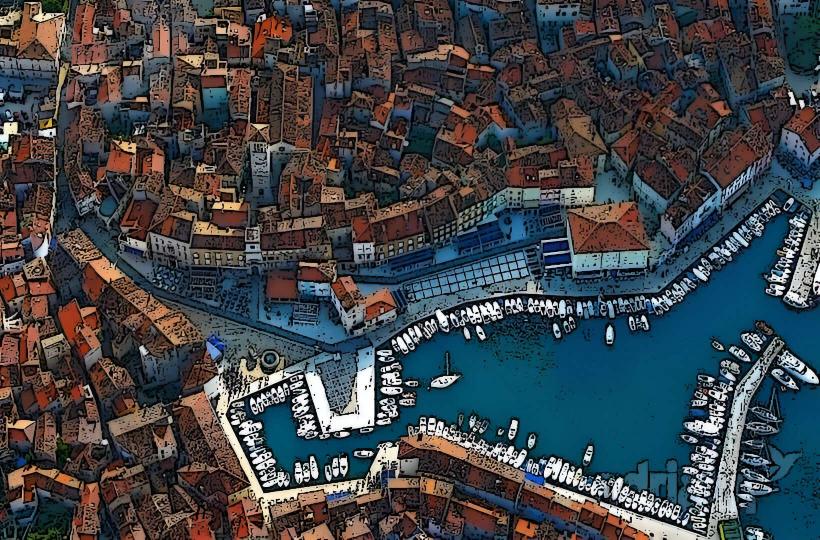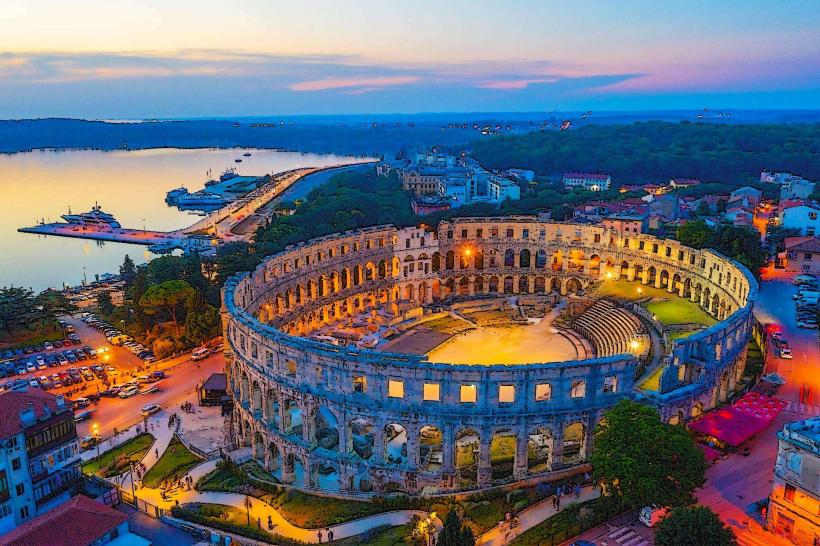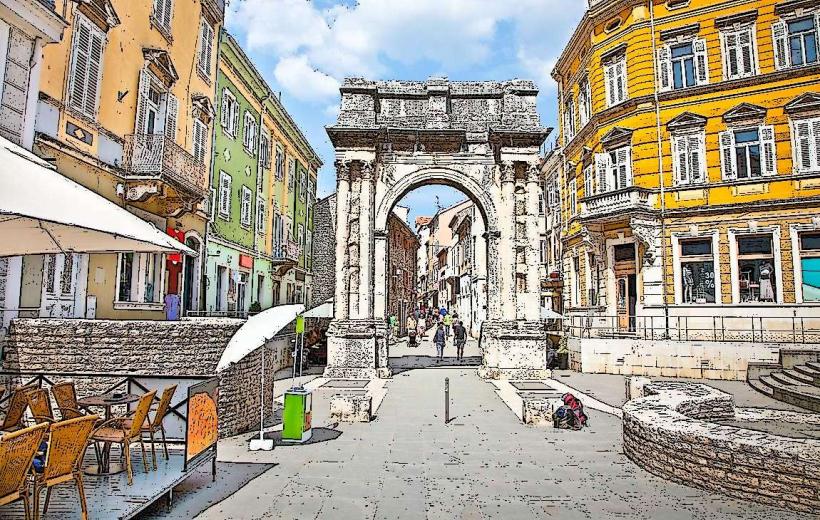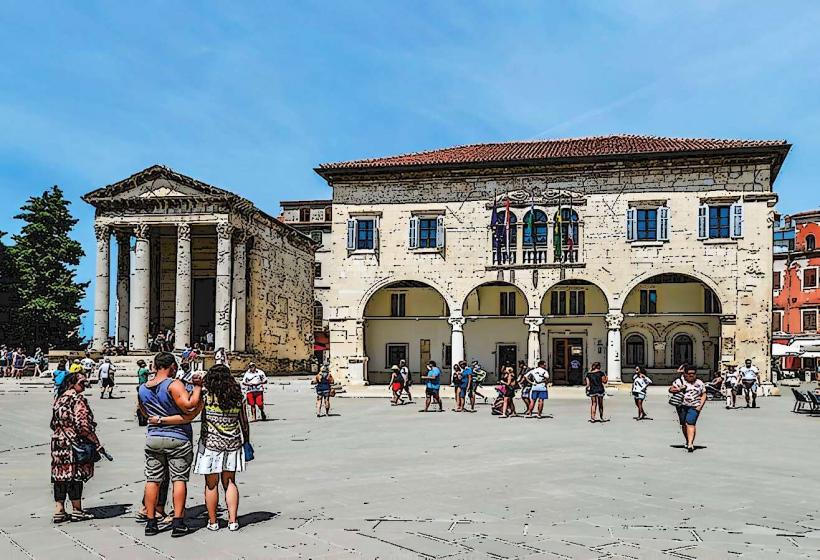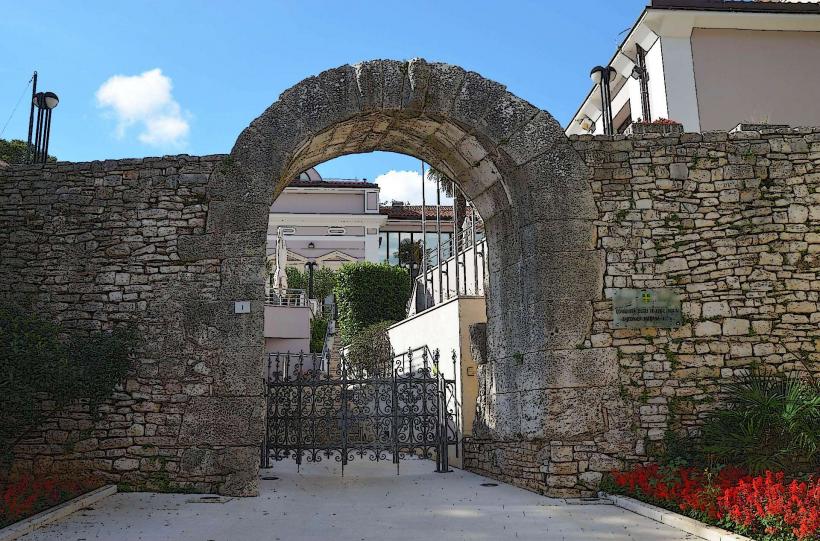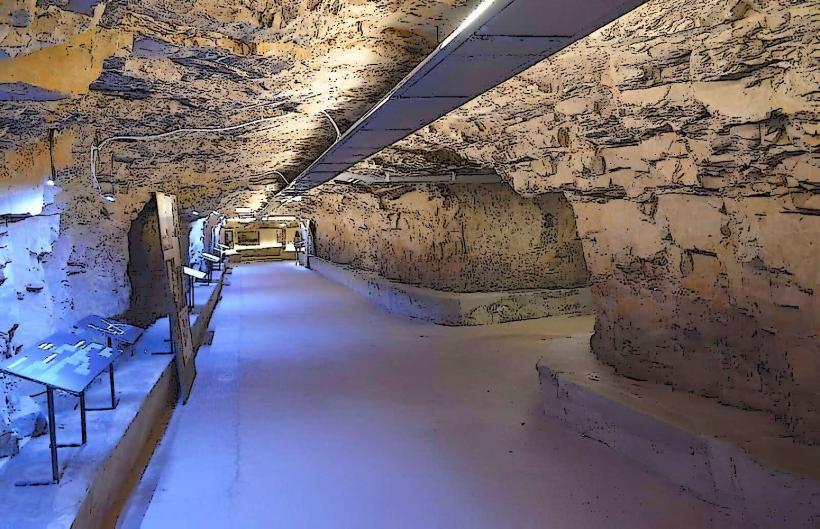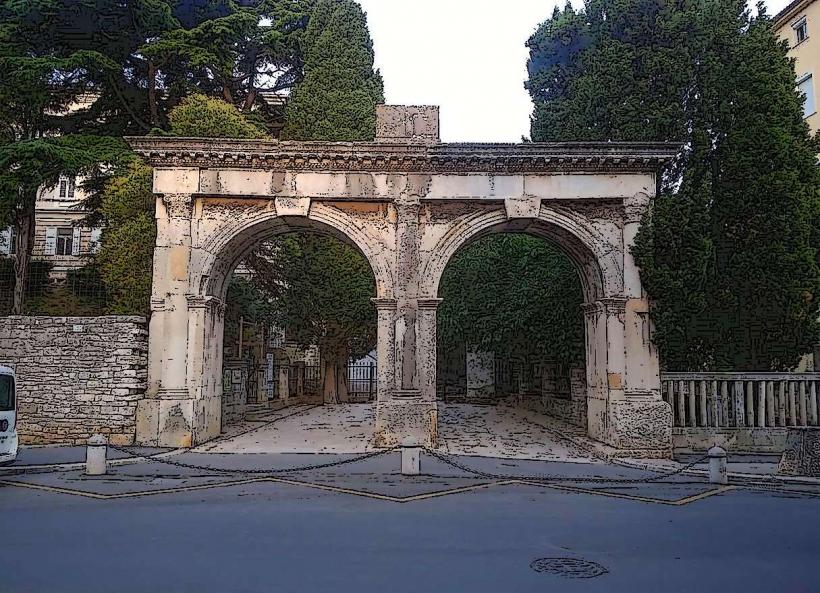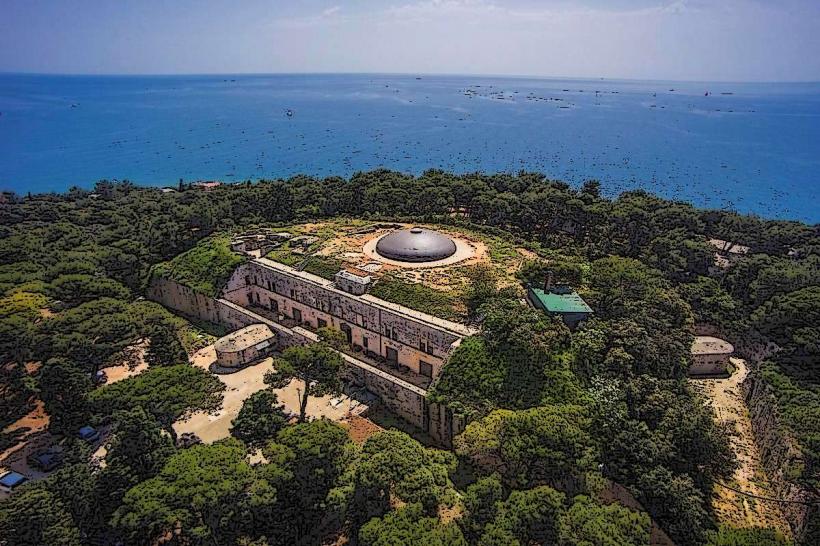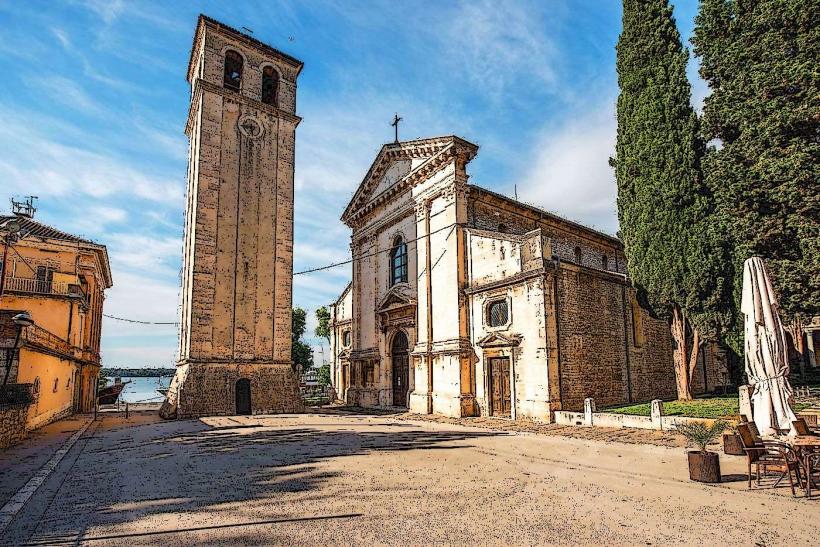Information
Landmark: Temple of AugustusCity: Pula
Country: Croatia
Continent: Europe
Temple of Augustus – Pula, Croatia
The Temple of Augustus is one of the most significant and best-preserved Roman monuments in Pula, Croatia. Built in the early 1st century CE, during the reign of Emperor Augustus, this ancient temple is dedicated to the first Roman emperor, Augustus, and stands as a testament to the city's importance within the Roman Empire.
Historical Background
- Construction: The temple was completed around 2 BCE, during the reign of Emperor Augustus, and was part of the Roman city of Pola (present-day Pula). It was built in honor of Augustus and his contribution to the expansion and consolidation of the Roman Empire.
- Function: The temple served both religious and political purposes. It was used for the worship of the emperor, a common practice in Roman provinces, and to showcase the power and influence of Rome in the region.
- Later History: After the fall of the Roman Empire, the temple fell into disrepair. In the Middle Ages, the structure was repurposed as a Christian church and later as a warehouse. It was not until the 19th century that efforts began to restore the temple to its original form.
Architectural Features
Design and Structure
- The Temple of Augustus follows the classical Roman temple design, with a rectangular shape, a pronaos (portico), and a cella (inner chamber).
- The temple is built in the Corinthian order, with fluted columns and intricate capitals, characteristic of the grandeur and elegance typical of Roman architecture.
Material and Construction
- The temple is constructed from local limestone and features high-quality marble on some elements, adding to its beauty and durability.
- The columns of the temple are tall and slender, with fine detailing on their capitals. The roof is supported by a set of six columns at the front and eight columns along the sides.
Facade and Portico
- The front of the temple features a grand portico with six columns, creating a grand and imposing entrance. This portico leads to a small, enclosed inner sanctum, which would have housed a statue of Augustus.
- The temple’s facade is adorned with decorative elements, including pilasters and a frieze that would have once depicted various mythological scenes.
Restoration and Preservation
- The temple has undergone restoration throughout the years, especially in the 19th and 20th centuries. Its preservation is a testament to the importance of the building both historically and culturally.
Cultural and Religious Significance
Emperor Worship
- The Temple of Augustus was part of the imperial cult, a practice in which Roman emperors were deified and worshipped. This temple served as a focal point for the reverence of Augustus and the Roman gods.
Political Symbolism
- The temple also symbolized the connection between Pula and the Roman Empire. By dedicating a temple to Augustus, Pula reinforced its loyalty to Rome and its significant role in the empire’s expansion.
Local Importance
- The temple played an important role in the religious and civic life of Pula during the Roman period. It would have been a place for public rituals, sacrifices, and other religious observances dedicated to Augustus.
Visitor Experience
Open to Public
- The Temple of Augustus is now an important tourist attraction in Pula. It is situated in the Roman Forum, a public square that also contains other historical monuments such as the Triumphal Arch of the Sergii.
Exhibits
- The temple is part of a larger archaeological site, and visitors can explore the temple’s ruins, including the well-preserved columned portico and the detailed carved capitals.
- There are often exhibits within the temple that highlight its history, architectural features, and the role of the Roman Empire in Istria.
Accessibility
- The temple is centrally located, making it easily accessible for visitors to Pula. It is situated in the heart of the city, making it convenient for tourists exploring other nearby landmarks such as the Pula Arena and Roman Forum.
Interesting Facts
Unique Preservation
- The Temple of Augustus is one of the few Roman temples in the world to have survived in such good condition, especially considering its age. Many other Roman temples were destroyed or repurposed over the centuries.
Symbol of Pula’s Roman Heritage
- The temple is not only a religious and cultural monument but also a symbol of Pula’s importance as a key Roman city on the Adriatic coast. Its presence in the heart of the modern city underscores the long history and continuity of the area.
Dedicated to Augustus
- The temple’s dedication to Augustus is significant because Augustus was the first emperor to formalize the imperial cult. His deification marked the beginning of a practice that would continue throughout the Roman Empire, with future emperors also being honored in similar temples.
Nearby Attractions
- Roman Forum: The Temple of Augustus is situated in the Roman Forum, which was once the center of public life in Roman Pula. The area includes other important Roman monuments, such as the Triumphal Arch of the Sergii.
- Pula Arena: Just a short walk from the temple, the Pula Arena is one of the best-preserved Roman amphitheaters in the world and a major highlight of Pula’s Roman heritage.
- Arch of the Sergii: Another significant Roman monument located nearby, the Arch of the Sergii was built to commemorate the Sergii family and is one of Pula’s most iconic landmarks.
- Temple of Diana: Located near the Roman Forum, this smaller but equally significant Roman temple is another example of Pula’s rich archaeological heritage.
Conclusion
The Temple of Augustus is an extraordinary example of Roman architecture and serves as a historical symbol of Pula's Roman past. Its preservation, standing proudly in the center of the city, allows visitors to connect with the grandeur of the ancient Roman Empire. Whether you are a history enthusiast, architecture lover, or simply a curious traveler, the Temple of Augustus offers a fascinating glimpse into the past, making it an essential stop when visiting Pula.

